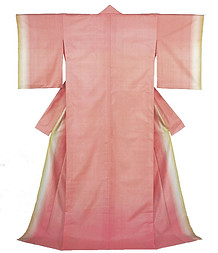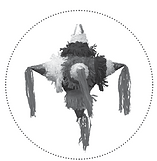DISCOVER CULTURES + TRADITIONS FROM AROUND THE GLOBE

KIMONO
着物

. . . . . . . . . . . . . . . . . . . . . . . . . . . . . . . . . . . . . . . . . . . . . . . . . . . . . . . . . . . . . . . . . . . . . . . . . . . . . . . . . . . . . . . . . . . . . . . . . . . . . . . . . . . . . . . . . . . . . . . . . . . . . . . . . . . . . . . . . . . . . . . . . . . . . . . . . . . . . . . . . . .

*
• Derived from the words ki (wear) and mono (thing), the kimono is a traditional Japanese garment. Kimonos come in a range of styles and patterns. They are typically hand-sewn into a “T” shape from 4 single pieces of fabric called tans and tied with an obi, or belt.
• The capital city of Japan is Tokyo (東京) formerly called Edo (江戸), it was the political, economic and cultural center of Japan. Many people from all over Japan brought their kimonos with them when they came to the capital. Edo became a center for kimono fashion and culture. Today, Tokyo continues to be home to the latest kimono fashions.
. . . . . . . . . . . . . . . . . . . . . . . . . . . . . . . . . . . . . . . . . . . . . . . . . . . . . . . . . . . . . . . . . . . . . . . . . . . . . . . . . . . . . . . . . . . . . . . . . . . . . . . . . . . . . . . . . . . . . . . . . . . . . . . . . . . . . . . . . . . . . . . . . . . . . . . . . . . . . . . . . . .
JAPAN



THE TRADITION
A YEAR OF EXPRESSION
COLOR + PATTERN
• The colors and patterns displayed on kimono fabric are not random. Kimonos are such an important part of Japanese history and culture. They are considered art and one's choice of color and pattern is chosen carefully. Over time, Kimono color combinations have become part of Japanese design culture.
Example of traditional color choices connecting with the seasons. Notice how specific the colors are and how the color description connects to elements in nature. [PHOTO Musume Miyuki]
January } • Pine sprout green + deep purple
February } • Red blossom plum crimson + purple
March } • Peach + khaki
April } • Cherry white + burgundy
May } • Orange Flower deadleaf yellow + purple
June } • Artemesia sprout green + yellow
July } • Lily red + deadleaf yellow
August } • Cicada wing cedar bark + sky blue
September } • Aster lavender + burgundy
October } • Bush Clover rose + slate blue
November } • Maple vermilion + grey-green
December } • Chrysanthemum lavender + deep blue
. . . . . . . . . . . . . . . . . . . . . . . . . . . . . . . . . . . . . . . . . . . . . . . . . . . . . . . . . . . . . . . . . . . . . . . . . . . . . . . . . . . . . . . . . . . . . . . . . . . . . . . . . . . . . . . . . . . . . . . . . . . . . . . . . . . . . . . . . . . . . . . . . . . . . . . . . . . . . . . . . . .
CONTEMPORARY + MODERN CANVASES
Take a look at the range of Kimono patterns below of both historical and contemporary kimonos. They depict what a rich canvas the Kimono has been for fabric artisans.
"Meisen silk was produced in Japan from the late nineteenth century and became particularly popular between 1910 and 1940. Meisen was an innovative, quick and cost-effective dye and weaving method with the effect of labor-intensive and multicolored traditional kasuri ikat fabric. The meisen kimonos that were produced en masse were the first affordable ready-to-wear kimonos. Designed by a young generation of Japanese textile designers who synthesized classic Japanese design with the influence of Western design movements . . ."
Kimono Meisen: The Karun Thaker Collection • Karun Thakar + Anna Jackson












{ MEISEN KIMONOS • pieces from Haruko Watanabe's vintage meisen kimono collection from the early 1900's }
. . . . . . . . . . . . . . . . . . . . . . . . . . . . . . . . . . . . . . . . . . . . . . . . . . . . . . . . . . . . . . . . . . . . . . . . . . . . . . . . . . . . . . . . . . . . . . . . . . . . . . . . . . . . . . . . . . . . . . . . . . . . . . . . . . . . . . . . . . . . . . . . . . . . . . . . . . . . . . . . . . .









